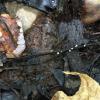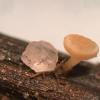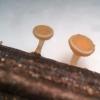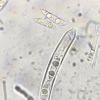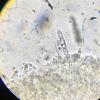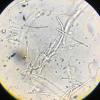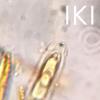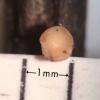
24-04-2024 21:54
Bonjour, J'ai trouvé ce Lasiobolus sur laissées

23-04-2024 15:18
 Lothar Krieglsteiner
Lothar Krieglsteiner
... but likely a basidiomycete. I hope it is o.k.

23-04-2024 13:17
 Edouard Evangelisti
Edouard Evangelisti
Bonjour à tous, Je viens de récolter ce que je

23-04-2024 21:49
Ethan CrensonHello all, A friend recently found this orange as

22-04-2024 11:52
 Zuzana Sochorová (Egertová)
Zuzana Sochorová (Egertová)
Hello,I made a loan of a collection of Microstoma

11-01-2022 16:36
Hi does anyone have a digital copy of Raitviir A (

22-04-2024 20:38
 Miguel Ángel Ribes
Miguel Ángel Ribes
Good afternoon.Does anyone know this anamorph?It g

19-04-2024 14:28
Cudoniella tenuispora: Distinctive macro and habit
Hymenoscyphus ?
Ethan Crenson,
05-09-2019 20:40
Found by a friend last weekend in a New York City park. Growing in a small creek on what could be a twig of hardwood, or the stem of a leaf, or perhaps some other kind of stem. I think this is Hymenoscyphus. The fruiting bodies are waxy, stipitate, perhaps 1mm tall and 1mm in diameter at the most. Asci are 80-82 x 8-9µm IKI+. Spores are hyaline, fusiform, sometimes with one end rounded and the other pointed, guttulate, measuring around 19-20 x 4.5-5µm. Paraphyses are vermiform, not enlarged at the ends for the most part. Is this Hymenoscyphus? Maybe Hymenoscyphus caudatus?
Thank you in advance.
Ethan
Hans-Otto Baral,
05-09-2019 20:49

Re : Hymenoscyphus ?
This looks clearly like a petiole. The blackening of the substrate points to H. albidus, but I am unaware of this species occurring in America.
H. caudatus is an aggregate. Helpful is to clarify whether the asci arise from croziers or simple septa. Also I am not sure about the VBs in the living paraphyses,m are they strongly refrcative like oil drops?
Since the closeup shows apos on a rather undarkened petiole, I am not fully sure they are the same as the others.
Zotto
H. caudatus is an aggregate. Helpful is to clarify whether the asci arise from croziers or simple septa. Also I am not sure about the VBs in the living paraphyses,m are they strongly refrcative like oil drops?
Since the closeup shows apos on a rather undarkened petiole, I am not fully sure they are the same as the others.
Zotto
Ethan Crenson,
05-09-2019 21:03
Re : Hymenoscyphus ?
I am almost completely certain that the petiole in the in situ photos and the one from my dissecting microscope photos are one and the same. I assumed that the color shift in both the fungi and the petiole was due to them drying out in my refrigerator for 5 days. I will attempt to get better documentation of the base of the asci. Zotto, apologies, but could you explain for me what VBs is an abbreviation for? Thank you.
Ethan
Hans-Otto Baral,
05-09-2019 21:56

Re : Hymenoscyphus ?
VBs are refravtive vacuolar bodies. They look like oil drops (lipid bodies, LBs) but unlike LBs they disappear in KOH or when pressing on the cover slip.
Martin Bemmann,
05-09-2019 22:11

Re : Hymenoscyphus ?
And this (red arrow in the attachment) is a Fraxinus samara (seed).
Most probably Fraxinus nigra, if we look for North American species:
Regards
Martin
